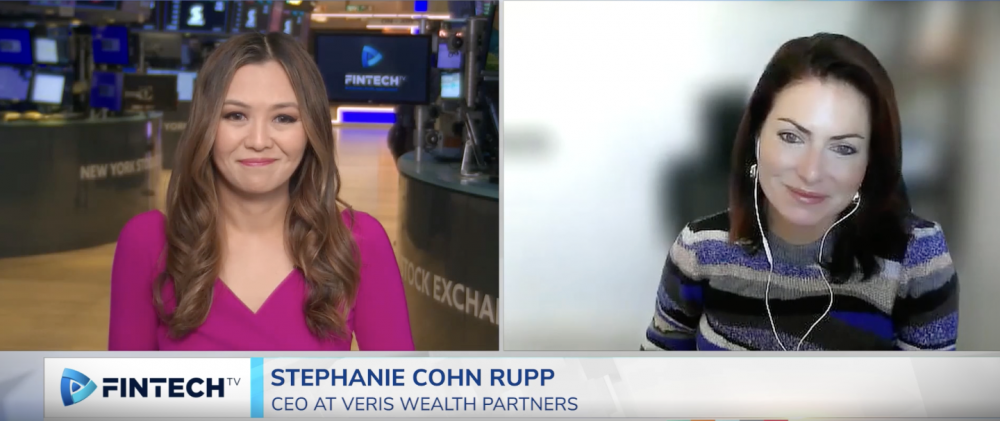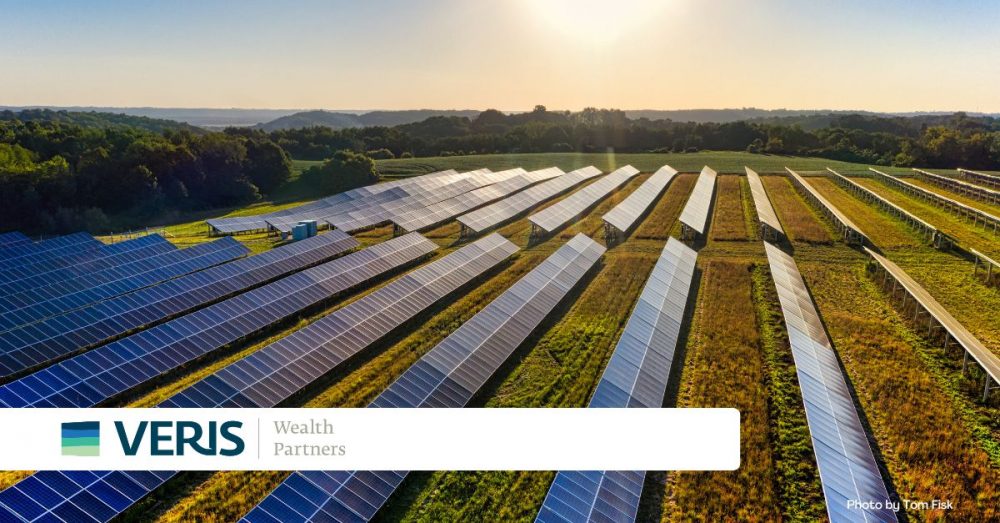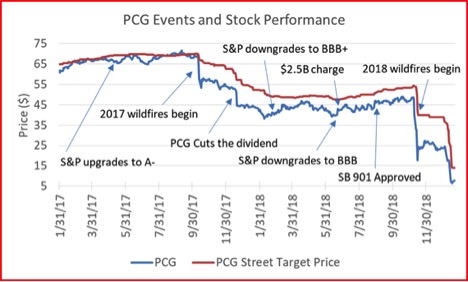Veris CEO Stephanie Cohn Rupp Interviewed About Sustainable Investing on Fintech TV
Remy Blaire interviewed Veris’ CEO Stephanie Cohn Rupp about sustainable investing for Fintech TV in March of 2024.
Transcript of the Interview
Remy Blaire: Welcome to Impact TV, I’m Remy Blaire. Investing can achieve social and environmental benefits all while generating financial returns. Joining me today is Stephanie Cohn Rupp, CEO of Veris Wealth Partners, a Certified B Corp. Stephanie, thank you so much for joining me today.
Stephanie Cohn Rupp: Thank you for having me.
Remy Blaire: 2024 is well underway and…there are areas of opportunities that may be supportive of sustainability efforts and are also aligned with impact. What are the important themes that you’re paying attention to this year?
Stephanie Cohn Rupp: Two big themes are climate solutions and what we call DEIB: diversity equity, inclusion, and belonging. The overlap of these two themes is what we call climate justice. We believe there are plenty of opportunities out there. There are great new technologies and innovative funds (including) interesting funds that are focused on inclusion. Because we believe that investors are not impartial and it’s important to understand inherent biases to make optimal investment solutions. And so, one of our themes is inclusion, which doesn’t mean quotas, doesn’t mean excluding anybody. It means providing more opportunity and investing more broadly into entrepreneurs throughout the United States.
Remy Blaire: Adaptation, resilience, and response to climate and weather events is very real for many regions and communities around the globe. In terms of what you’re hearing from your clients about their commitments to sustainable investing. Can you give us a little bit of insight?
Stephanie Cohn Rupp: Our approach is truly across asset classes; we don’t believe there’s a golden bullet or silver bullet that will give you a single solution. We look throughout the portfolio and see how we can advance the values of our clients. And not all clients agree. You can use exclusion in public equities. You can divest from certain companies; you can invest with certain technology companies on the clean tech side and transition side. You can invest in certain companies that are in oil and gas and engage with them. There’s no need to look at these sectors as demonic — they have to be part of this solution.
And then we go, from asset class to asset class, into ESG integrated funds where there are certain theories of change that are held by the fund manager. And then on the alternative side – whether it’s private equity, venture, or private debt – looking at solutions where you’re investing directly into regenerative agriculture, sustainable forestry, or in clean tech funds et cetera — it really runs the gamut. We think these solutions need to be integral to the portfolio in all asset classes. There is no single solution. The other thing is there are a lot of disagreements. Some clients believe in nuclear energy, some believe it’s the devil. The how is very specific to the values and the identity of the asset owner.
Remy Blaire: And Stephanie, the great wealth transfer is something we will all be paying attention to as trillions of dollars transfer hands. So tell me what you see when it comes to millennials and Gen Z, in terms of wealth management and impact orientation.
Stephanie Cohn Rupp: I am a little counter to the mainstream thinking on this. I think it’s a gender issue and not a generational issue. We have clients who are values driven, who are phenomenal and knowledgeable about all these solutions and they’re 72 years old. And then we have clients in their twenties, thirties, forties, fifties, who really care about values investing. So, I don’t find it to be a generational thing.
I think everyone is getting into the sector and understanding climate change is an existential threat to humanity. And so, whether you are grandparents or are just graduating from college, the issue is salient. What I have found though, and this is much more anecdotal, but in the client base, the women are often the most passionate about poverty alleviation, economic development, and fighting climate change.
I wrote an article a few months ago (ESG Critics Are On The Wrong Side of History) after looking at whether high net worth women, both Democratic and Republican, care about climate issues. And (polling data indicates that) Republican women care about climate as much as Democratic women care about climate.1 So I do think there’s much more consciousness and I would say an eagerness to act from women than from men, from the experiences that I have had at Veris Wealth Partners.
Remy Blaire: And private markets represent opportunities to drive impact while also adding diversification portfolios. It does go without saying that it’s vital to consider investments in the portfolio context — diversifying across different approaches and asset classes. So, what does it mean to invest for impact across asset classes?
Stephanie Cohn Rupp: We have different methods for each of the different asset classes and sub-asset classes. We don’t invest in commodities, and we also don’t invest in crypto. I can quickly go through the asset classes. On the public side, you can negatively screen – take out the companies you don’t like – maybe it’s pornography, maybe it’s guns – it really depends on the values of the individual. Otherwise, you can positively tilt for the companies and industry you really believe in you can go overweight on. Then you can choose active strategies in the public equity side, where the manager actively engages with companies – there’s a certain degree of change. And then there’s private debt – investing in (for example) loan funds that invest in entrepreneurs in inner cities, who invest in entrepreneurs who are Indigenous, who invest in entrepreneurs who have been forgotten by the financial system as we know it. On the private equity side, we have all sorts of interesting strategies as well. These could be focused on climate, on wealth building, on women as entrepreneurs and beneficiaries, or generally about inclusion. And then the final piece is on the venture capital side so those are the longer lockups and higher risk investments into funds that do incredible work backing social entrepreneurs who really care about changing the world as we know it. (For example) a very interesting strategy around wealth building using ESOPs… So, it really runs the gamut. You can really use all the levels within a portfolio for it to be values aligned.
Remy Blaire: And Stephanie, last but not least, before we let you go, we are seeing plenty of turbulence in geopolitics. Then we’re also seeing plenty of stress in the post pandemic global landscape. We’ve also been seeing upheaval when it comes to ESG, as well as DEI practices. What is your view in terms of DEI and the wealth management industry, and what do you think of the rule for wealth managers out there?
Stephanie Cohn Rupp: I think there’s a lot of misunderstanding, both in the world of ESG and the world (in general) about DEI. ESG truly is about values aligned investing. I have met pro-life values aligned investors and pro-choice values aligned investors. ESG is really not only a certain monolithic view of the world. What it is, truly, is aligning your investments with your values.
You care about how you vote, what car you drive, how you eat – people express their identity through a whole host of things. What we’re saying in my industry is you should also own what you own from a financial perspective because there are real world impacts. This is not “woke finance.” I think that is a great misunderstanding. It is values alignment. The Koch brothers are conservative, but they are also values-aligned investors. It is agnostic in a lot of ways, but I think there’s a misnomer that it’s only extremely left because you have a lot of actions against the traditional extractive industries like oil and gas.
On the DEI side, I also think what’s important to understand is that there are historical wrongs. Currently 7.7% of the population of the United States is comprised of African-American women and only 0.3% of all the venture capital funds – including billions of dollars invested in venture capital – only 0.3% goes to African-American women. The movement is not saying, “Let’s not invest in men, let’s not invest in Caucasian women,” It’s just saying, if you believe that talent is equally distributed, you should be investing in a way that is equally distributed. And so, it’s much more about inclusion than exclusion. And I think there’s a lot of fear and a mentality of scarcity thinking if we invest in certain minorities or certain populations we’re divesting, we’re giving less to others. And actually, that couldn’t be farther from the truth. Everybody benefits in the United States when the economy is booming, when there’s greater investment, therefore greater consumption. I think we really have to get away from that zero-sum game mentality. Diversity is not about that. It’s not about zero-sum games. It’s really about raising all boats and trying to ensure that everybody’s included in the economy, so everybody wins. That is fundamentally at the heart of the movement.
Remy Blaire: Well, Stephanie, I think it’s really important to make that distinction. So thank you so much for clarifying that. Thank you so much for joining me today.
Stephanie Cohn Rupp: Thank you so much for your time. It was a pleasure.
Note: This transcript was lightly edited for clarity and length.












